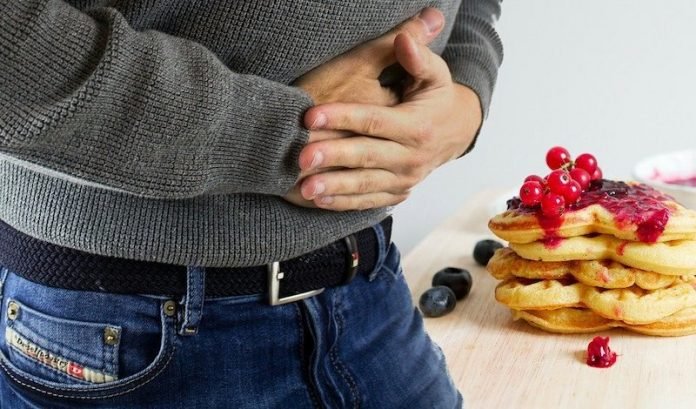
In a new study, researchers found that after one consumes food or a beverage containing fructose, the gut helps to shield the liver from damage by breaking down the sugar before it reaches the liver.
However, the consumption of too much fructose—particularly in a short period of time—can overwhelm the gut, causing fructose to ‘spillover’ into the liver, where it wreaks havoc and causes fatty liver.
The findings help to unravel longstanding questions about how the body metabolizes fructose—a form of sugar often found in fruits, vegetables, and honey, as well as most processed foods in the form of high fructose corn syrup.
The research was conducted by a team at the University of Pennsylvania and elsewhere.
Consumption of fructose has increased 100-fold over the last century, even as studies have shown that excessive consumption, particularly sweet drinks, is linked to non-alcoholic fatty liver disease, obesity, and diabetes.
Studies have shown that excessive consumption of fructose can be toxic to the liver. When large quantities of fructose reach the liver, the liver uses excess fructose to create fat, a process called lipogenesis.
Eventually, people who consume too much fructose can develop nonalcoholic fatty liver disease, a condition in which too much fat is stored in the liver cells.
Until now, it hasn’t been clear whether the gut’s role in processing the fructose prevents or contributes to fructose-induced lipogenesis and the development of liver diseases.
For this study, the team studied a key enzyme, called ketohexokinase, that controls how fast fructose is consumed.
They showed that lowering the levels of this enzyme in the gut led to fatty livers in the mice.
Conversely, the team showed that increasing the level of ketohexokinase in the gut protected from fatty liver.
Thus, the researchers found the breakdown of fructose in the gut mitigates the development of extra fat in liver cells in mice.
They discovered that the rate at which the intestine can clear fructose determines the rate at which fructose can be safely ingested.
In addition, the team showed the same amount of fructose is more likely to result in the development of fatty liver when it consumed via a beverage versus food.
Similarly, one faces an increased likelihood of developing a fatty liver when consuming fructose in a single setting compared to several doses spread over 45 minutes.
The findings show fructose induces lipogenesis when the sugar intake rate exceeds the gut’s capacity to process fructose and protect the liver.
This could result in fructose spillover and drive metabolic syndrome.
One author of the study is Zoltan Arany, MD, Ph.D., a professor of Cardiovascular Medicine at Penn.
The study is published in Nature Metabolism.
Copyright © 2020 Knowridge Science Report. All rights reserved.



